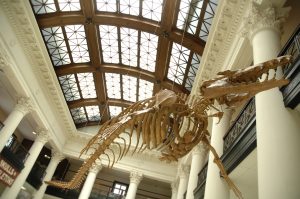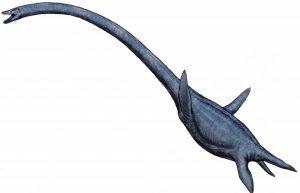
TUSCALOOSA, Ala. — The community is invited to explore a world of fossils during National Fossil Day at the Alabama Museum of Natural History at Smith Hall on The University of Alabama’s campus.
The event will be held from 4 p.m. to 6 p.m. Wednesday, Oct. 16, in the grand gallery of Smith Hall, and it will feature demonstration tables with the department of geology and the evolutionary studies program, hands-on activities for children in the museum’s Discovery Lab and a wide variety of fossils on display.
The museum will also unveil the new Elasmosaur specimen collected this summer in Greene County by middle school students during an annual expedition.
“The event offers people in the community an opportunity to learn about the incredible fossil history that Alabama has,” said Todd Hester, museum naturalist. “It’s also a chance to see new technology in fossil research.”
Printers from the UA 3D Printing Lab, located in the College of Engineering, will print fossils. Previously printed fossils will also be displayed. UA paleontologists use the 3D Printing Lab in the College of Engineering to scan and print fossils, an easier and less damaging process than making molds to study.
UA paleontologists are also using the lab’s capabilities to scan the state fossil of Alabama, the whale-like Basilosaurus cetoides that hangs in Smith Hall.

“Three-D printing is revolutionary and will touch nearly every industry in the future, so it’s important for students from across campus with different expertise to work together to solve challenging problems with this new technology,” said Dr. Andrew Graettinger, an associate professor of civil, construction and environmental engineering and the lab’s director.
In conjunction with National Fossil Day, there will be a book signing and lecture by renowned author Dr. Jim Lacefield immediately following the event in room 205 (next to the grand gallery). Lacefield wrote the book on the geology of Alabama, “Lost Words in Alabama Rocks: A guide to the state’s ancient life and landscapes.”
A retired adjunct professor of biology and earth science at the University of North Alabama, Lacefield holds a doctorate in science education from The University of Alabama with specializations in both biology and geology.
The Alabama Museum of Natural History partnered with the National Park Service to offer this community event. UA’s Alabama Museum of Natural History is in Smith Hall near the Quad at the corner of Sixth Avenue and Capstone Drive on The University of Alabama campus.
Contact
Kim Eaton, UA media relations, 205/348-8325, kkeaton@ur.ua.edu